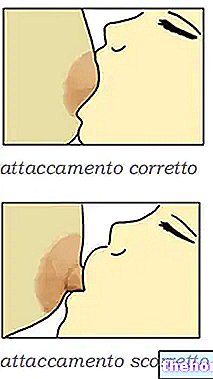Generality
The contraceptive spiral, or IUD, is an effective long-acting method of contraception, the effects of which are reversible.

The contraceptive pill has several advantages (eg: it is practical, it is safe, it is effective, etc.), but also some disadvantages (it is associated with various side effects); it should also be noted that not all women can use it.
For the insertion of the contraceptive coil, it is necessary to contact a gynecologist, who, before carrying out the placement, will assess the suitability for use of the contraceptive device in question.
What is the Contraceptive Spiral?
The contraceptive spiral, or simply spiral, is an important long-acting reversible method of contraception.
The contraceptive coil consists of a small device of variable shape, designed for its insertion and placement in the uterus of women, obviously wishing to prevent possible conception, for a period of time equal to at least the duration of its effects (between 3 and 5 years).
The contraceptive spiral is also known by the acronym of IUD, an Anglo-Saxon acronym for intra uterine device.
Types
Currently, two types of contraceptive coil are available: the hormonal contraceptive coil (or hormonal IUD) and the copper contraceptive coil (or copper IUD).
Hormonal Contraceptive Spiral

Once inserted into the uterine cavity, the hormonal contraceptive coil begins to release small amounts of synthetic progesterone; the latter has the effect of preventing fertilization, as:
- It makes the endometrium thin and unstable, so that implantation of the egg is impossible (fertilization cannot take place without implantation of the egg);
- It thickens the cervical mucus, which thus becomes a sort of liquid that blocks the spermatozoa before their encounter with the egg (without the egg-sperm encounter, there is no conception).
As you can see, the hormonal contraceptive spiral uses the same mechanism of action used by the vaginal ring or by the progestin birth control pill (also called minipill).
The main variants of the hormonal contraceptive spiral guarantee their contraceptive effects for 3-5 years; after which they are to be removed and, in the event that those who use them are not yet looking for a pregnancy, to be replaced with similar devices.
HORMONAL CONTRACEPTIVE SPIRAL SUBTYPES
There are several variants of hormonal contraceptive spiral; different from each other for the amount of synthetic progesterone they contain, these variants are 4 and are known by the names of: Mirena, Skyla, Liletta and Kyleena.
While Mirena and Kyleena have a maximum duration of 5 years, Skyla and Liletta guarantee a contraceptive effect of up to 3 years.
Copper Contraceptive Spiral
The copper contraceptive coil is a small device containing copper.
Once inserted into the uterine cavity, the copper contraceptive spiral exerts, through the ions deriving from the same copper, a spermicidal action (ie kills the spermatozoa); this ability ensures that, within the female genital system, there are never viable and mobile spermatozoa capable of fertilizing the egg.
The main variants of copper contraceptive spiral available in Italy They ensure effects their contraceptive effects for a period of 3-5 years.
Did you know that ...
In the United States, copper contraceptive coils are available in which birth control effects last up to 10-12 years.
COPPER CONTRACEPTIVE SPIRAL SUB-TYPES
In Italy, several variants of copper contraceptive spiral are available.
Different from each other in size and specific shape, all these models resemble, in appearance, an anchor or a T and are supplied, along the entire longitudinal section (the vertical section of the T) with a spiral wound copper wire (wire on which the contraceptive effect of the device depends).
The main variants of copper contraceptive spiral available in Italy are: Multiload CU 375, Multisafe CU 375, Multisafe CU 375, Neosafe T CU 380, Nogravid M 380, Nova T 380 and Anticon 400.
It should be noted that, recently, an Israeli medical company has launched on the market an innovative copper contraceptive spiral, which does not have the classic T shape; available for the moment only in Belgium and Spain, this device - whose name is IUB 3D - basically consists of a wire equipped with copper beads, which, once in the uterine cavity, is wound into a ball, resulting in this way without of extremities and sharp corners for the uterus (extremities and sharp corners that are instead present in the classic T-shaped copper contraceptive spirals).
The IUB spiral has a duration of action of 5 years.
Contraindications
Theoretically, the contraceptive spiral could be inserted by the gynecologist in the uterus of all women of childbearing age; however, on a practical level, this model of contraception is only recommended for women who have had at least one pregnancy, to be sure of their fertility.
Furthermore, the contraceptive coil should not be introduced in women prone to vaginal infections, as bacteria could more easily lurk in the vicinity of the coil and generate rather unpleasant disturbances. It has been statistically recorded that women who do not yet have children are more prone to infections than mothers: this explains why the contraceptive spiral is preferable in women who have already given birth at least once.
Furthermore, women with vulvodynia or other pelvic inflammations should not use the IUD.
Insertion
Insertion of the Contraceptive Spiral: How Does It Happen?
The contraceptive coil is inserted deeply into the uterus by the gynecologist, preferably during menstruation, since the dilated cervix facilitates its application.
As already mentioned, the woman must undergo a gynecological examination, so the doctor can choose the most suitable spiral model for the structure of the woman's uterus. After having ascertained that the woman is not pregnant, the doctor performs a swab to the patient and / or a pap smear to rule out any possible local infectious form.
The insertion of the spiral is performed on an outpatient basis; however, the perception of the discomfort / pain related to the application can be of varying intensity, based on the sensitivity of the patient, the subjectivity of the same and (above all) on the basis of the "delicacy" of the gynecologist .To remedy this discomfort, the doctor may give the woman a specific pain reliever before surgery.
The spiral is gently pushed into the uterus through the cervix, previously cleaned with an antiseptic substance; the copper wire is then cut by the doctor to prevent it from exiting excessively from the cervix.
In order to avoid bacterial infections, it is absolutely essential that the woman avoids sexual intercourse and the use of internal vaginal tampons in the following two days from the application of the coil.
Benefits
What are the Benefits of the Contraceptive Spiral?
Many women choose the contraceptive spiral because it offers many advantages:- Unlike the contraceptive pill, which must be taken at about the same time every day to maximize its effectiveness, the contraceptive coil is inserted into the uterus, and remains there for a few years, always guaranteeing an excellent contraceptive effect. it is therefore impossible for the spiral to be forgotten, as it happens for many women who use the pill.
- The contraceptive safety of the spiral, in particular that with slow hormonal release, ensures extraordinary contraception (contraceptive safety of the latest generation spirals equal to 99.9%): in any case, the woman must periodically check that the spiral is positioned correctly.
- The periodic release of progestin, in minimal quantities, allows to significantly reduce the menstrual flow, avoiding heavy menstruation. It is estimated that 20% of women who use the hormonal spiral no longer have menstruation, a factor considered positive by many women. However, with regard to the copper IUD, the menstruation flow of women who use it generally does not decrease.
- The hormonal coil significantly reduces menstrual disorders such as menorrhagia and dysmenorrhea.
- The gradual, albeit continuous, release of the progestin reduces the risk of endometrial polyps and uterine hyperplasia.
- The application of the spiral within the next three days from a potentially risky intercourse guarantees 99% of the contraceptive effect.
- The IUD can be removed at any time and later the woman, when she wishes, can have another pregnancy (rapid reversibility of the effect).
- The IUD is an excellent alternative for women who do not want to take the pill or the trans dermal contraceptive patch.
Disadvantages
What are the Disadvantages of the Contraceptive Spiral?
Like all contraceptive methods, the IUD also has unwelcome side effects:- Breast swelling, acne, migraines and the perception of generalized swelling are the most frequent side effects in women using the progestogen coil. Just like the pill, the contraceptive efficacy of this spiral pattern could also be compromised by the concomitant use of certain drugs.
- Women prone to vaginal infections should not use the IUD.
- The hormone-releasing coil could cause vaginal dryness and hot flashes, similar to those of menopause.
- The copper IUD could cause spotting in the very first months of application: generally, the phenomenon disappears in a short period. Nevertheless, when the gynecologist does not insert the IUD correctly, or in any case does not find the most suitable model of contraceptive device for the structure of the "woman's uterus, spotting is a recurring phenomenon, becoming the first spy that should immediately alert the woman.
- The IUD is absolutely not recommended in women predisposed to salpingitis, cervicitis and pelvic inflammatory diseases.
- The statistics show that 20% of women who use the contraceptive coil suffer from oligomenorrhea and amenorrhea in the first months following the application.
- The IUD fails in 1-2% of cases, causing unwanted pregnancy.
- During the menstrual cycle, the coil may move or be removed from the uterus.
- The IUD does not protect against sexually transmitted diseases: in this regard, the IUD is recommended for women with a fixed partner. In case the woman changes partners, it is preferable to use a condom (barrier method).
Advantages of the contraceptive spiral
Disadvantages of the contraceptive spiral
- The contraceptive coil is inserted into the uterus and remains there for a few years, always guaranteeing an excellent contraceptive effect.
- The latest generation spirals ensure contraceptive safety equal to 99.9%
- The spiral greatly reduces menstrual flow, avoiding heavy menstruation, menorrhagia, dysmenorrhea
- The IUD reduces the risk of endometrial polyps and hyperplasia
- The application of the spiral within the next three days from a potentially risky intercourse guarantees 99% of the contraceptive effect
- The IUD is an "excellent alternative for women who do not want to take the pill or the trans dermal contraceptive patch.
- The spiral can be removed at any time
- Breast swelling, acne, migraines and perception of generalized swelling
- The contraceptive efficacy of the hormonal coil could be compromised by the concomitant use of some drugs
- Vaginal dryness and hot flashes (especially in the first months after application)
- Spotting is a recurring phenomenon
- Oligomenorrhea and amenorrhea (in the first months after application)
- The IUD fails in 1-2% of cases, causing unwanted pregnancy
- The IUD does not protect against sexually transmitted diseases
- During the menstrual cycle, the IUD may shift (rare)
Positioning Control
Considering that the spiral could move during menstruation (a rare phenomenon), it would be good for the woman to always check the presence of the spiral after the period: she should insert a finger into the vagina and feel the presence of the thread. In fact, as analyzed above, when applying the spiral the doctor cuts the thread by a few centimeters, generally 3 or 4, to allow the cord to come out slightly from the neck of the uterus, thus facilitating the woman to control the spiral. When the woman feels the plastic device, during self-check, she will have to go to the doctor, because some complications could be going on.
During intercourse
When the contraceptive coil is inserted correctly, it is very unlikely that the partner will notice the device: in fact, only by touch (with the introduction of the finger in the vagina) can the thread be felt.
Periodic Gynecological Checks
The first check is recommended after the first month from the application of the contraceptive coil: in this way, the doctor can ascertain the good state of health of the woman and instruct her to self-control the contraceptive coil. Generally, gynecological checks are then repeated every six months.




























